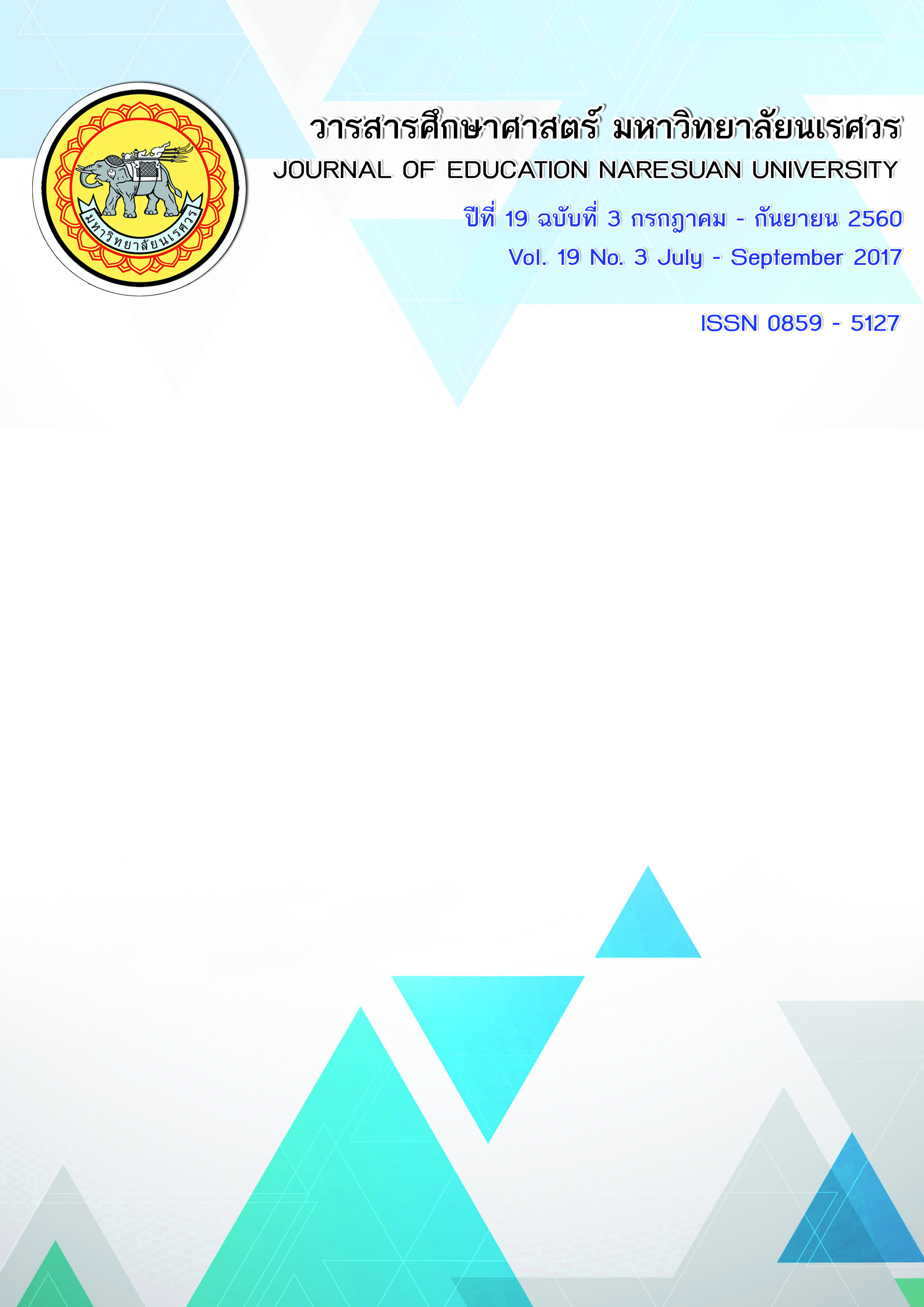การพัฒนารูปแบบส่งเสริมการใช้ประโยชน์จากการประเมินโครงการ ของวิทยาลัยพยาบาลสังกัดสถาบันพระบรมราชชนก
Main Article Content
Abstract
การวิจัยนี้มีวัตถุประสงค์เพื่อพัฒนารูปแบบส่งเสริมการใช้ประโยชน์จากการประเมินโครงการของวิทยาลัยพยาบาลในสังกัดสถาบันพระบรมราชชนก การดำเนินการวิจัยแบ่งเป็น 4 ขั้นตอน คือ 1) ศึกษาสภาพปัจจุบัน ปัญหาและความต้องการใช้ประโยชน์จากการประเมินโครงการ โดยการสัมภาษณ์บุคลากร จำนวน 35 คน และการตอบแบบสอบถามจำนวน 321 คน 2) สร้างรูปแบบและคู่มือแล้วนำไปตรวจสอบความสอดคล้องและความเหมาะสม โดยผู้ทรงคุณวุฒิจำนวน 9 คน นำคู่มือไปสอบถามความคิดเห็นจากผู้ใช้จำนวน 14 คน 3) ทดลองใช้รูปแบบที่วิทยาลัยพยาบาล
1 แห่ง จำนวน 2 โครงการ กลุ่มตัวอย่างรวมจำนวน 18 คน ประเมินการใช้ประโยชน์ก่อนและหลังใช้รูปแบบ 4) ประเมินรูปแบบด้านความเป็นประโยชน์ ความเป็นไปได้ และความเหมาะสม จากผู้เกี่ยวข้องภายหลังทดลองใช้รูปแบบ จำนวน 18 คน สถิติที่ใช้วิเคราะห์ข้อมูลเชิงปริมาณ ได้แก่ ร้อยละ ค่าเฉลี่ย ส่วนเบี่ยงเบนมาตรฐาน และสถิติทดสอบ
วิลคอกซัน (Wilcoxon Sing Rank Test) วิเคราะห์ข้อมูลเชิงคุณภาพโดยการวิเคราะห์เนื้อหา ผลการวิจัย พบว่า
1. มีการใช้ประโยชน์จากการประเมินโครงการอยู่ในระดับมาก แต่ยังพบปัญหาเกี่ยวกับการใช้ประโยชน์ ปัญหาการประเมิน ปัญหาบริบทองค์กร และปัญหาการมีส่วนร่วมของผู้มีส่วนได้ส่วนเสีย และต้องการให้มีแนวทางแก้ไขปัญหาดังกล่าว
2. รูปแบบส่งเสริมการใช้ประโยชน์จากการประเมินโครงการที่สร้างขึ้นมี 4 องค์ประกอบ คือ 1) การระบุผู้ใช้ประโยชน์จากการประเมิน 2) การส่งเสริมการใช้ประโยชน์จากการประเมิน ประกอบด้วย 7 กลยุทธ์ แบ่งออกเป็น ขั้นเตรียมองค์กร มี 2 กลยุทธ์ ได้แก่ ส่งเสริมให้เป็นนโยบายหนึ่งขององค์กร เสริมสร้างความรู้และทัศนคติต่อการประเมินและการใช้ประโยชน์จากการประเมิน และขั้นดำเนินโครงการ มี 5 กลยุทธ์ ได้แก่ ส่งเสริมการมีส่วนร่วมของผู้ใช้ประโยชน์ในการประเมินโครงการ ส่งเสริมการประเมินโครงการให้มีคุณภาพ ส่งเสริมการเตรียมสารสนเทศจากการประเมินให้มีคุณภาพ ส่งเสริมการเผยแพร่ผลการประเมินให้มีประสิทธิภาพ และส่งเสริมการนำผลการประเมินไปใช้ประโยชน์ทันเวลา 3) การกำกับติดตามการใช้ประโยชน์จากการประเมิน และ 4) การให้ข้อมูลย้อนกลับ
3. ผลการทดลองใช้รูปแบบส่งเสริมการใช้ประโยชน์จากการประเมินโครงการ พบว่า มีการใช้ประโยชน์จากการประเมินโครงการภายหลังการทดลองใช้สูงกว่าก่อนทดลองใช้รูปแบบอย่างมีนัยสำคัญทางสถิติที่ระดับ 0.01
4. ผลการประเมินรูปแบบส่งเสริมการใช้ประโยชน์จากการประเมินโครงการ พบว่า มีความเป็นประโยชน์ ความเป็นไปได้ และความเหมาะสม อยู่ในระดับมาก
DEVELOPMENT OF THE PROGRAM EVALUATION USE PROMOTING MODEL OF NURSING COLLEGE IN PRABOROMARAJCHANOK INSTITUTE
The purpose of this study was to develop the program evaluation use promoting model of Nursing College in Praboromarajchanok Institute. The research procedure followed 4 steps:
1) to study background, statement of problems and need assessments related to the evaluation use of Nursing College by interviewed 35 personnel and questionnaires of 321 personnel, 2) to develop the promoting model, examine this model by 9 experts and 14 stakeholders, 3) to implement the promoting model for 2 programs with 18 participants, and 4) to assess the promoting model by 18 participants. The statistics used for data analysis were mean, percentage, standard deviation and Wilcoxon Sign Rank Test.
The results were as follows;
1. The current condition of program evaluation used found that the high level. Problems related to program evaluation used found included: character of using, implement of evaluation, organizational context and the involvement of stakeholders. The personnel need practical guidelines for the use of program evaluation and consistent with the context of the College of Nursing.
2. The promoting model consisted of 4 components including; identifying intended users, evaluation use (consists of 7 strategies used in the preparation stage has 2 strategies included encouraging a policy of the organization and enhancing knowledge and attitude of evaluation and evaluation use. Five strategies of program implementation stage included encouraging the involvement of users in the program, promoting quality of program evaluation, promoting the preparation of information of the evaluation to be quality, promoting the dissemination of the results of the evaluation to be effective and promoting the use of timely results), monitoring evaluation use and feedback.
3. The results from using the promoting model was significantly higher than prior using
(p < .01).
4. The assessment of the promoting model revealed that this promoting model was actually utility, feasibility and propriety at high level.
Article Details
The owner of the article does not copy or violate any of its copyright. If any copyright infringement occurs or prosecution, in any case, the Editorial Board is not involved in all the rights to the owner of the article to be performed.


